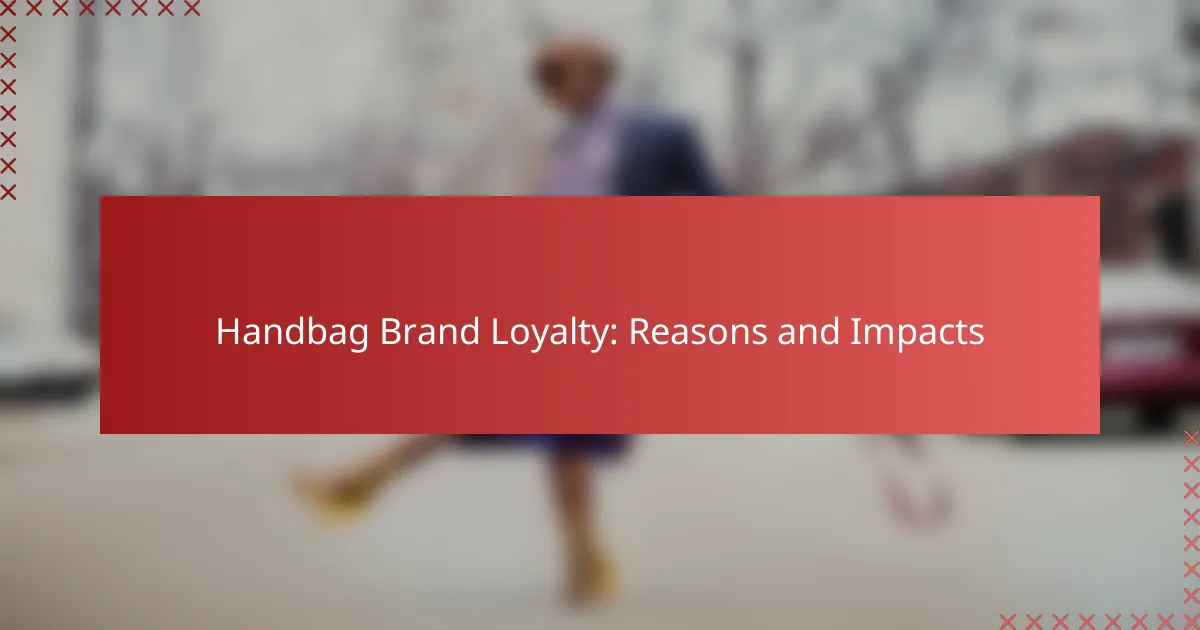Handbag brand loyalty is shaped by factors such as quality craftsmanship, emotional connections, and social status, which together forge a strong bond between consumers and their chosen brands. This loyalty not only influences purchasing decisions but also drives handbag sales, as brands implement strategies like exclusive collections and personalized experiences to enhance customer satisfaction and retention.

What drives handbag brand loyalty in consumers?
Handbag brand loyalty is primarily driven by factors such as quality craftsmanship, brand heritage, emotional connection, social status, and influencer endorsements. These elements create a strong bond between consumers and their preferred brands, influencing purchasing decisions and long-term loyalty.
Quality craftsmanship
Quality craftsmanship is a critical factor in handbag brand loyalty. Consumers often seek bags that are not only stylish but also durable and well-made. High-quality materials and meticulous attention to detail can justify higher price points and encourage repeat purchases.
Brands that consistently deliver exceptional craftsmanship tend to build a loyal customer base. For example, luxury brands like Hermès and Chanel are known for their superior quality, which fosters trust and encourages consumers to invest in their products over time.
Brand heritage
Brand heritage plays a significant role in establishing loyalty among handbag consumers. A rich history and a story behind the brand can create a sense of authenticity and prestige. Brands with a long-standing reputation, such as Louis Vuitton, often attract customers who value tradition and legacy.
Consumers are more likely to remain loyal to brands that have a compelling narrative, as it adds emotional value to their purchases. Understanding a brand’s heritage can enhance the overall consumer experience and strengthen brand attachment.
Emotional connection
Emotional connection is a powerful driver of handbag brand loyalty. When consumers feel a personal attachment to a brand, they are more likely to choose it repeatedly. This connection can stem from positive experiences, brand values, or even the lifestyle associated with the brand.
For instance, a handbag that symbolizes a significant life event, such as a graduation or wedding, can create lasting loyalty. Brands that engage with consumers on an emotional level often see higher retention rates and customer satisfaction.
Social status
Social status is a key consideration in handbag brand loyalty, particularly in luxury markets. Many consumers associate certain brands with prestige and exclusivity, which can enhance their social standing. Owning a high-end handbag can serve as a status symbol, influencing purchasing behavior.
Brands like Gucci and Prada leverage this aspect by creating limited editions and exclusive collections that appeal to consumers’ desire for recognition and belonging. This strategy not only drives sales but also fosters a sense of community among brand loyalists.
Influencer endorsements
Influencer endorsements significantly impact handbag brand loyalty, especially among younger consumers. When influencers showcase a brand, they can sway their followers’ opinions and purchasing decisions. Authentic endorsements can create a sense of trust and desirability around a brand.
Brands that collaborate with well-known influencers often see increased visibility and credibility. However, it is essential for brands to choose influencers whose values align with their own to maintain authenticity and foster genuine connections with consumers.
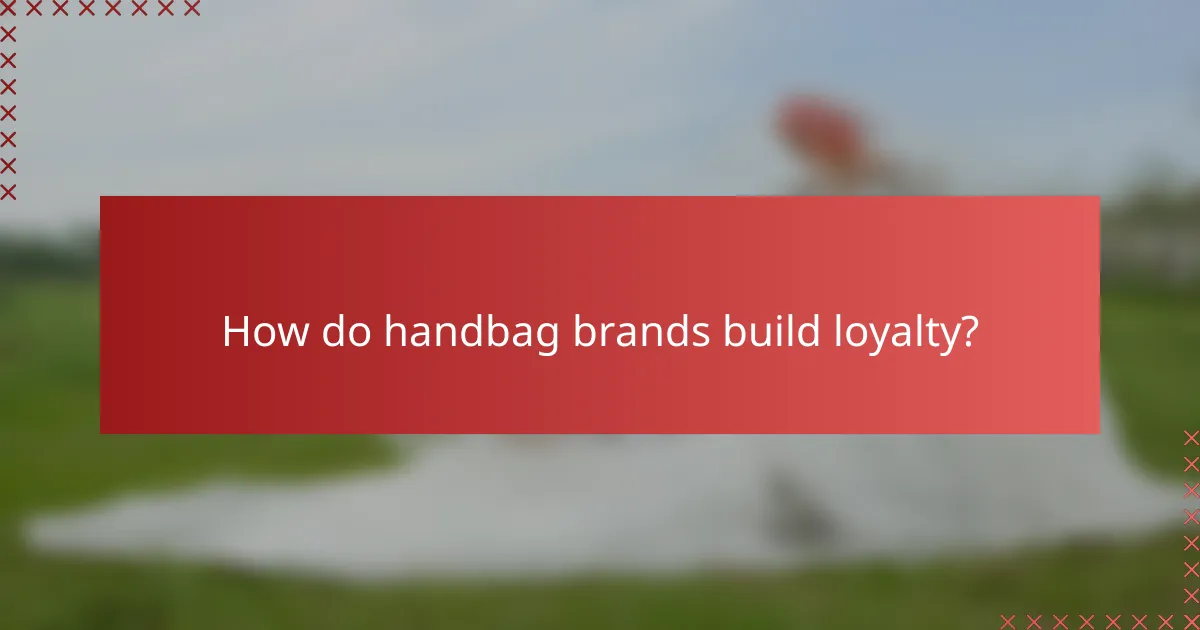
How do handbag brands build loyalty?
Handbag brands build loyalty through strategies that create emotional connections and enhance customer satisfaction. These methods often include exclusive collections, personalized experiences, and loyalty programs that reward repeat purchases.
Exclusive collections
Exclusive collections are limited-edition products that create a sense of urgency and desirability among consumers. By offering unique designs or collaborations, brands can attract loyal customers who want to own something special that others may not have.
For example, a brand might release a seasonal handbag line available only to members of their loyalty program, encouraging customers to engage with the brand more deeply. This exclusivity not only boosts sales but also fosters a community of brand advocates.
Personalized customer experiences
Personalized customer experiences are tailored interactions that make shoppers feel valued and understood. Handbag brands can achieve this through customized recommendations based on past purchases or preferences, enhancing the shopping experience.
For instance, a brand might use customer data to send personalized emails featuring handbags that match a customer’s style, or offer virtual styling sessions. Such initiatives can significantly increase customer satisfaction and retention.
Loyalty programs
Loyalty programs incentivize repeat purchases by rewarding customers with points, discounts, or exclusive access to new products. These programs can vary widely, from simple point systems to tiered memberships that offer escalating benefits.
Brands may implement features like birthday rewards or early access to sales, which can further enhance customer loyalty. It’s crucial for brands to communicate the value of their loyalty programs clearly, ensuring customers understand how to maximize their benefits.
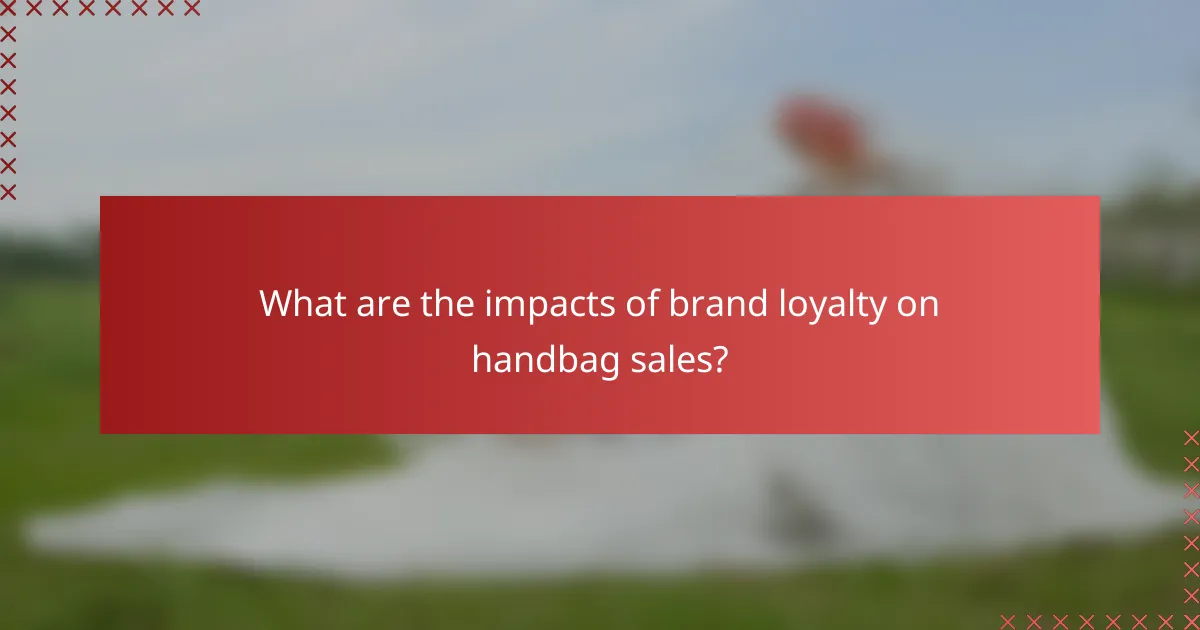
What are the impacts of brand loyalty on handbag sales?
Brand loyalty significantly boosts handbag sales by fostering a dedicated customer base that consistently chooses a specific brand over competitors. This loyalty translates into increased sales volume, enhanced customer retention, and a stronger market presence.
Increased repeat purchases
Brand loyalty leads to increased repeat purchases, as loyal customers are more likely to buy from a brand they trust. For example, a customer who has previously purchased a handbag from a particular brand may return to buy additional items, such as wallets or accessories, thus driving sales further.
Brands can encourage repeat purchases by offering loyalty programs, exclusive discounts, or early access to new collections. These incentives can reinforce the customer’s commitment and increase the frequency of their purchases.
Higher customer lifetime value
Loyal customers contribute to a higher customer lifetime value (CLV), which is the total revenue a business can expect from a single customer over their relationship. A loyal handbag buyer might spend significantly more over time compared to a one-time buyer, often exceeding hundreds or thousands of dollars.
To maximize CLV, brands should focus on building strong relationships through personalized marketing, exceptional customer service, and quality products that meet customer expectations. This approach not only retains existing customers but also attracts new ones through positive experiences.
Positive word-of-mouth marketing
Brand loyalty often leads to positive word-of-mouth marketing, where satisfied customers recommend a brand to friends and family. This organic promotion can be more effective than traditional advertising, as recommendations from trusted sources carry significant weight.
Brands can leverage this by encouraging customers to share their experiences on social media or through referral programs. Engaging with loyal customers online can amplify their positive sentiments and attract new buyers, further enhancing sales.
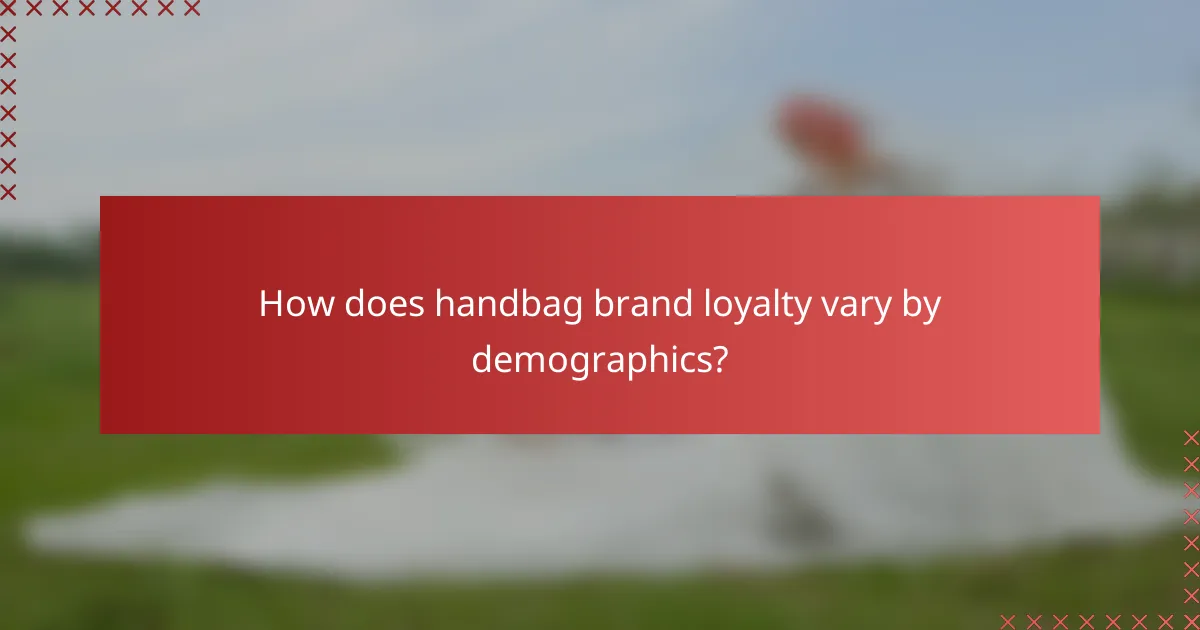
How does handbag brand loyalty vary by demographics?
Handbag brand loyalty can significantly differ across various demographic groups, influenced by factors such as age, income, and geographic location. Understanding these variations helps brands tailor their marketing strategies to meet the preferences of different consumer segments.
Age group preferences
Different age groups exhibit distinct preferences when it comes to handbag brands. Younger consumers, particularly millennials and Gen Z, often gravitate towards trendy, affordable brands that emphasize social media presence and sustainability. In contrast, older generations may prefer established luxury brands that signify status and quality.
Brands targeting younger demographics should focus on collaborations with influencers and limited-edition releases, while those appealing to older consumers might highlight craftsmanship and heritage in their messaging.
Income level influence
Income levels play a crucial role in handbag brand loyalty, with higher-income individuals typically favoring luxury brands known for their exclusivity and quality. Conversely, lower to middle-income consumers often seek value, gravitating towards brands that offer stylish yet affordable options.
Brands can cater to these income segments by offering a range of products, from premium lines for affluent customers to budget-friendly collections that maintain brand identity without compromising on style.
Geographic trends
Geographic location significantly impacts handbag brand loyalty, as cultural preferences and economic conditions vary widely. For instance, consumers in urban areas may prioritize trendy, designer handbags, while those in rural regions might prefer practical, durable options.
Brands should consider regional marketing strategies that resonate with local values and lifestyles. For example, a brand could emphasize eco-friendly materials in markets where sustainability is a priority, while focusing on luxury and exclusivity in affluent urban centers.
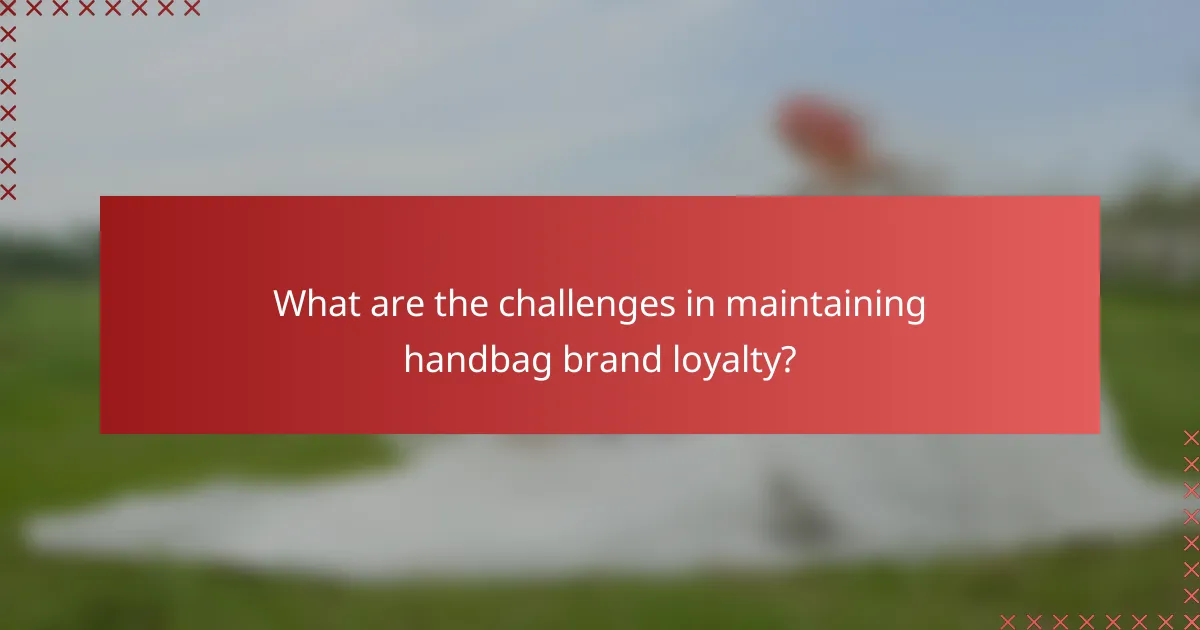
What are the challenges in maintaining handbag brand loyalty?
Maintaining handbag brand loyalty involves navigating various challenges that can impact consumer attachment. Key issues include market saturation, evolving consumer preferences, and the influence of social media on purchasing decisions.
Market saturation
Market saturation occurs when the number of handbag brands and styles exceeds consumer demand, making it difficult for any single brand to stand out. With countless options available, consumers may feel overwhelmed and less inclined to remain loyal to one brand.
Brands must differentiate themselves through unique designs, quality materials, or exceptional customer service. For instance, offering limited-edition collections or personalized products can help capture attention in a crowded market.
To combat saturation, brands should focus on building strong emotional connections with their customers. Engaging storytelling, brand heritage, and community involvement can foster loyalty even in a competitive landscape.
